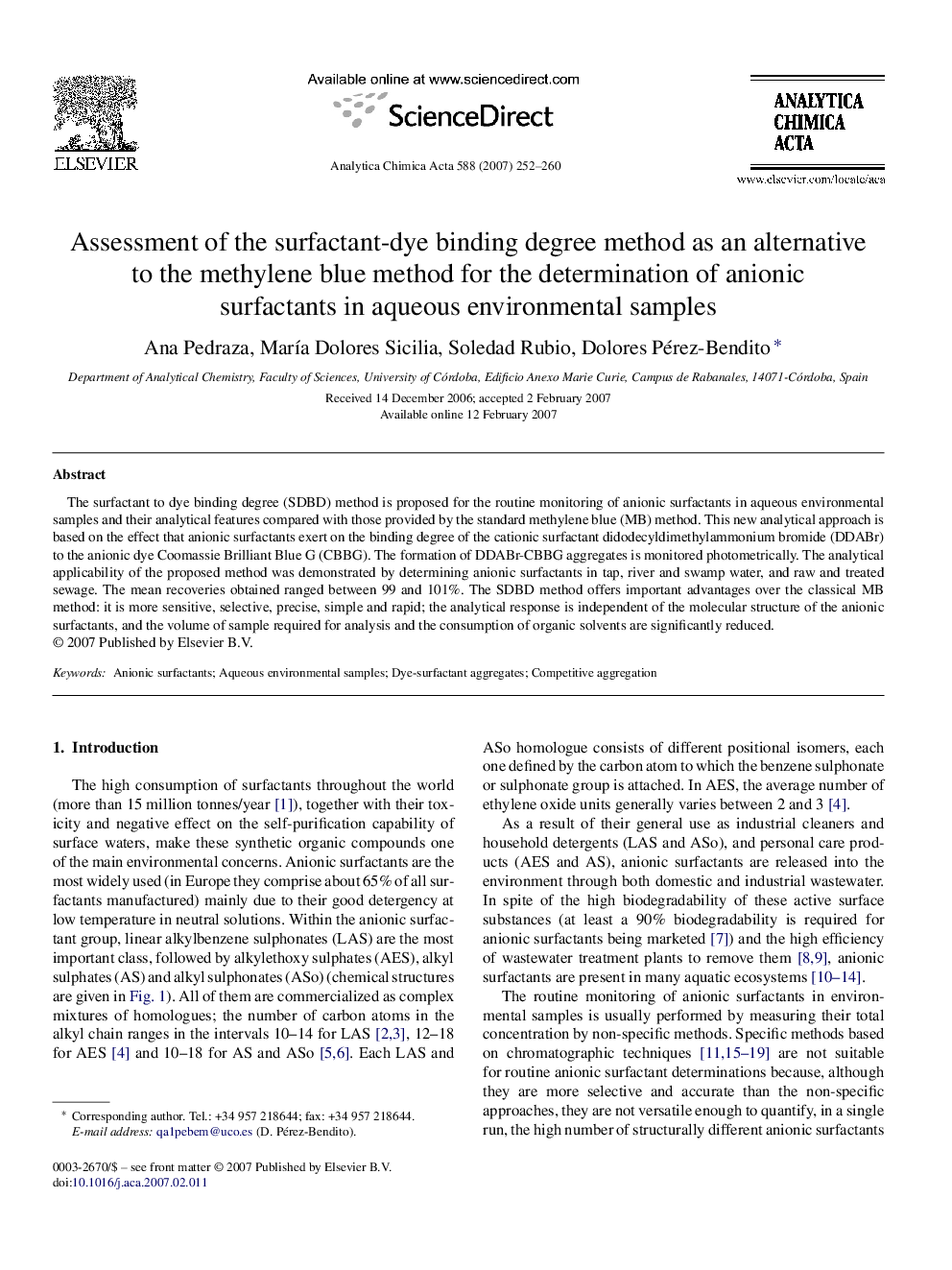| Article ID | Journal | Published Year | Pages | File Type |
|---|---|---|---|---|
| 1170787 | Analytica Chimica Acta | 2007 | 9 Pages |
The surfactant to dye binding degree (SDBD) method is proposed for the routine monitoring of anionic surfactants in aqueous environmental samples and their analytical features compared with those provided by the standard methylene blue (MB) method. This new analytical approach is based on the effect that anionic surfactants exert on the binding degree of the cationic surfactant didodecyldimethylammonium bromide (DDABr) to the anionic dye Coomassie Brilliant Blue G (CBBG). The formation of DDABr-CBBG aggregates is monitored photometrically. The analytical applicability of the proposed method was demonstrated by determining anionic surfactants in tap, river and swamp water, and raw and treated sewage. The mean recoveries obtained ranged between 99 and 101%. The SDBD method offers important advantages over the classical MB method: it is more sensitive, selective, precise, simple and rapid; the analytical response is independent of the molecular structure of the anionic surfactants, and the volume of sample required for analysis and the consumption of organic solvents are significantly reduced.
